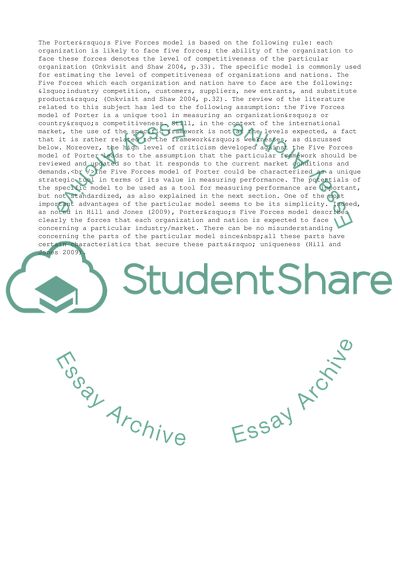Cite this document
(Analysis of Porter's Theory of Competitive Advantage Coursework Example | Topics and Well Written Essays - 1750 words - 1, n.d.)
Analysis of Porter's Theory of Competitive Advantage Coursework Example | Topics and Well Written Essays - 1750 words - 1. https://studentshare.org/management/1790744-strategy-assessment-2
Analysis of Porter's Theory of Competitive Advantage Coursework Example | Topics and Well Written Essays - 1750 words - 1. https://studentshare.org/management/1790744-strategy-assessment-2
(Analysis of Porter'S Theory of Competitive Advantage Coursework Example | Topics and Well Written Essays - 1750 Words - 1)
Analysis of Porter'S Theory of Competitive Advantage Coursework Example | Topics and Well Written Essays - 1750 Words - 1. https://studentshare.org/management/1790744-strategy-assessment-2.
Analysis of Porter'S Theory of Competitive Advantage Coursework Example | Topics and Well Written Essays - 1750 Words - 1. https://studentshare.org/management/1790744-strategy-assessment-2.
“Analysis of Porter'S Theory of Competitive Advantage Coursework Example | Topics and Well Written Essays - 1750 Words - 1”. https://studentshare.org/management/1790744-strategy-assessment-2.


